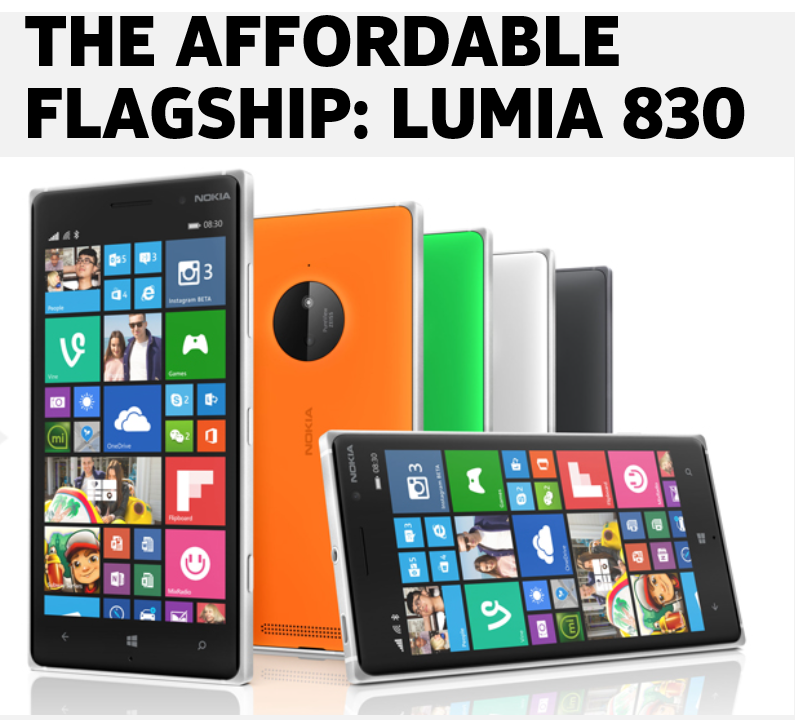Is it too late for Windows Phone?


“Is it too late for Windows Phone?”
The reporter sitting to my right at a private press event at the IFA tradeshow in Berlin yesterday asked that question of Chris Weber, Microsoft’s Corporate Vice President of Sales for mobile devices. That’s probably not the opening question that a self-professed “sales guy” wants to hear at the first Lumia launch event since the Microsoft-Nokia deal closed, but there it was.
It’s a question I hear often lately, usually from tech journalists who’ve decided that the smartphone space has turned into a two-horse race, with Apple and Samsung a furlong or more in front of a pack of also-rans that includes Microsoft/Nokia.
“It’s not too late at all,” was Weber’s reply. Which is also what you’d expect a sales guy to say.
“We're just starting a refresh of the portfolio,” he continued, “bringing prices lower than we've ever done before.” That refresh, Weber argued, will drive momentum, with the new lower price points giving Microsoft “volume and scale,” which in turn drives the ecosystem. “And we are going to continue to push price points even lower.”
During our 25-minute interview, I heard the phrase “new price points” over and over again.
If you’re skeptical that lower prices alone can drive volume, you’ve got lots of company.
But Microsoft Mobile, the new name for the former Nokia Devices and Services division, isn’t just betting on lower prices to help it make up ground on its much larger rivals. Instead, the company is hoping that it can win converts by offering flagship features on devices that don’t carry the high price tags of new, high-end offerings from Apple and Samsung.
That’s the logic behind the new Lumia 830, Microsoft’s “affordable flagship” device, which includes features not normally found in a new, elegant-looking, extremely thin and light device that sells for 330 Euros (U.S. price isn’t announced yet). That feature set includes integrated wireless charging and a 10MP PureView image sensor with Zeiss optics and hardware image stabilization.
The 830 won’t replace Microsoft’s real flagship devices, including the Lumia 1520, Icon, and 930, all of which have faster processors and better displays to justify their higher price tags. But they’re a step up from the lower-cost devices also announced today, and collectively they give Microsoft Mobile a full global portfolio of Lumia devices at a wide range of prices.
That’s a different philosophy from either Apple or Samsung, which typically introduce one or two new devices and then turn older devices into the lower-priced midrange models. Can’t afford the latest iPhone or Galaxy? Try last year’s model or, if your budget is really tight, the one from two years back.
Microsoft’s hoping its focus on photography will divert attention from the dreaded app gap. There are some genuinely innovative features in the Lumia Denim firmware update available today in the new phones and coming later this year for its current flagship devices. But will selfie-obsessed consumers be drawn to Microsoft’s new Lumias?
Featured
I asked Weber if there’s a market-share target that Windows Phone needs to hit before it can be considered a success. “Generally speaking,” he replied, “getting to double-digit share in key markets is something we look at.” Weber pointed to the fact that Windows Phone has already hit that target in 14 countries, including the U.K., but other key markets, notably the U.S., still lag far behind.
The real missed opportunity for Microsoft so far is in its traditional core business, selling to enterprise customers. New Windows Phone devices have manageability features that should appeal to traditional IT buyers. The trouble for Microsoft is that those once powerful customers aren’t making the buying decisions for most mobile devices, which are purchased by consumers and then brought into the business.
Historically, success or failure in a tech market is determined not just by a company's own strategy but by luck. Apple is unlikely to stumble. But a misstep or two from Samsung could turn out to be a lucky break for Redmond.
The end of this year is a make-or-break opportunity for Microsoft Mobile. The disruptive aspects of the Nokia acquisition are in the past. The division needs to be able to post some solid gains in market share to prove that its bigger rivals aren’t going to run away with this race. If it can’t do that, then maybe it really is too late.